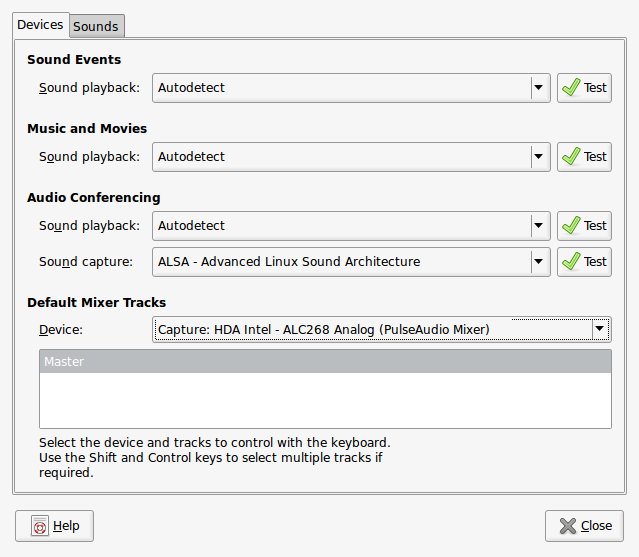Before I start, I would like to clarify that this step by step tutorial applies not only to duplicating hard drives that have Linux OS on them. You can clone pretty much any drive. What is on the hard disk is irrelevant; it could be Windows, Mac OS, Linux, just data, etc. There have to be just a few basic things in place:
- The target drive should be the same size or bigger than the source disk drive.
- Have a Linux Live CD or a Linux bootable USB drive or some other way of booting into Linux (we will be using Ubuntu’s Live CD for this tutorial).
- Access to the internet.
- There is a presumption that you know how to install a hard drive.
Making an exact copy of a hard drive (or any drive for that matter – CD, DVD, USB, etc.) is very easy and quick with Linux. One of the most popular commands on Linux to do this is dd. It is a very powerful utility that was originally developed for the UNIX operating system and is now default on every Linux distribution. It does a bit for bit copy of the data and it does not care about cylinders, partitions or files. Here is an example of a dd command that would make an exact copy of one disk to another:
dd if=/dev/sda of=/dev/sdb bs=64k
The bs option specifies the block size and it could be omitted, but it would speed up the process since the default block size is only 512 bits. dd is very effective and powerful command but it is not very suitable when you are trying to make a copy of a failing or failed disk. dd is not designed to read and recover bad sectors.
There are a number of other open source programs developed since dd (dd variants) that would address situations where there might be some bad drive sectors and they perform faster and more efficient than dd. Some of those are: dd_rescue, dd_rhelp and GNU ddrescue. GNU ddrescue is the one that I would recommend using if you want to clone a drive. It works both for a perfectly good drives that you would like to clone and for failed drives that you would want to recover data from.
Install the new drive.
The new drive should be of the same or bigger size. You might have to get the BIOS to recognize the new disk; in most cases that is not necessary. After you have put the drive in, boot into Linux from another device. An Ubuntu Live CD would be perfect for that. You can download an ISO image from here.
Now you have to find out what the drives’ logical names are. Open up a terminal window: Accessories -> Terminal or Alt + F2, then type in gnome-terminal and hit Enter.
In the terminal window type sudo lshw -C disk:
sudo lshw -C disk
*-disk:0
description: ATA Disk
product: WDC WD400BB-75FJ
vendor: Western Digital
physical id: 0
bus info: scsi@0:0.0.0
logical name: /dev/sda
version: 14.0
serial: WD-WMAJA3488275
size: 37GiB (40GB)
capabilities: partitioned partitioned:dos
configuration: ansiversion=5 signature=000b280f
*-disk:1
description: ATA Disk
product: ST340016A
vendor: Seagate
physical id: 1
bus info: scsi@0:0.1.0
logical name: /dev/sdb
version: 3.75
serial: 3HS63J2C
size: 37GiB (40GB)
capabilities: partitioned partitioned:dos
configuration: ansiversion=5 signature=000b280f
*-cdrom:0
description: SCSI CD-ROM
physical id: 2
bus info: scsi@1:0.0.0
logical name: /dev/cdrom
logical name: /dev/scd0
logical name: /dev/sr0
capabilities: audio
configuration: status=nodisc
In my case I have two disks- disk:0 and disk:1. The logical name of disk:0 is /dev/sda and the one for the second disk is /dev/sdb. Make a note of that. In your case that might be different. Identify which drive will be the source and which one the copy. There are 2 things in the above output that will help you do that- the product and the size. You can also use the command sudo fdisk -l. It will show you the hard drives and their partitions.
Prepare the target drive.
Now that you have identified the target drive you need to put an initial partition on it. In the terminal window you have opened execute:
cfdisk -z /dev/sdb
The cfdisk program will start, then type W and then yes to confirm. This is simple enough but you could also use the GParted program that comes with Ubuntu to do the same.
Install the GNU ddrescue program
Before you can install ddrescue you need to enable the Universe Software Repository. Go to System -> Administration -> Software Sources and then check the box next to “Community-maintained Open Source software (universe)“. Close the window. It will ask you to whether you want to refresh the list of software- go ahead and agree to that. After it finishes you can install ddrescue by running this in the terminal window:
sudo apt-get install gddrescue
Clone the disk.
Now you are ready to clone the drive by executing ddrescue. Specify the source disk first and then the target disk. You can use the -v option to be able to see the progress of the operation:
sudo ddrescue -v /dev/sda /dev/sdb
Make sure you get the order of the drives right or you could overlay the old drive with the new drive and loose all the data!
Depending on the size of your source drive this operation could take a couple of hours or even more. Once it finishes the new drive will be an exact copy of the old one. You can run a quick check on the file systems of the new drive:
e2fsck -fp /dev/sdb1
If the new drive is bigger than the old one you need to extend the partition(s) on it or create another one to make use of the rest of the space. The GParted program that comes with Ubuntu is ideal for this.
Once you are done, remove the old drive and boot from the new disk.
Credit: Ubuntu Kung Fu. Published article from the book.

